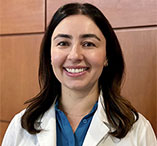Joint Diseases
Recognizing and Understanding Joint Pain
When a joint is healthy, all of the parts work together and the joint moves easily and without pain. However, diseases or injury can disturb the normal functioning of your joints resulting in:
- Pain
- Muscle weakness
- Limited movement
Arthritis
Osteoarthritis is sometimes called degenerative arthritis because it is a “wearing out” condition involving the breakdown of cartilage in the joints. Joint cartilage is a gel-like protective tissue found at joint surfaces that provides support and lubrication during movement. When cartilage wears away, the bones rub against each other, causing pain and stiffness. OA usually occurs in people over age 50, and often in people with a family history of osteoarthritis.
Osteoarthritis
Osteoarthritis (OA) is the most common form of arthritis in the world.1 You may have heard OA referred to as "wear and tear" arthritis. When OA begins to affect one of your joints, a series of reactions take place that actually begin to degrade your once-healthy bone and the "soft tissue" around the joint – tendons and cartilage. Once the cartilage that normally cushions and protects the bones of the joint breaks down, the bones of your joint eventually rub directly against each other. Your body reacts to this by creating bone spurs and the joint capsule itself may thicken and weaken. Inflammation eventually sets in.
Osteoporosis
Osteoporosis is a disease in which bones grow more fragile and porous over time, making them more likely to break. Often known as the “silent disease,” osteoporosis is painless and many people don’t even know they have it until they suffer a broken bone after a minor injury, or begin to lose height. Sometimes the only symptom is a dull pain that is felt, in the hips, lower back, neck and wrists.
Osteoporosis FAQs
What is Osteoporosis?
Osteoporosis is a skeletal disease characterized by low bone mass that results in a reduction in the strength of the skeleton.
The Scope of the Problem
- Osteoporosis affects as many as 44 million Americans
- 80% of those affected are women
Treatment Options
Following the orthopaedic evaluation, the orthopaedic specialist will review and discuss the results with you. Based on his or her diagnosis, your treatment options may include:
Non Surgical Options
Diet & Exercise
- Average American is 20–40 lbs. overweight.
- Average person takes 5000–7000 steps/day.
- Reduces stress on weight-bearing joints (extra pressure on some joints may aggravate your arthritis).
Nutritional Supplements
Your doctor has provided this information to answer some of the questions you may have about nutritional supplements that may be linked to improved joint health. The possible beneficial effects of glucosamine and chondroitin, two popular supplements for patients with joint pain, have been making news in recent years. This information is intended to help you better understand who might benefit from the supplements and why.
Joint Fluid Supplements
For patients whose joint pain does not improve with medication or physical therapy, “joint grease” injections may provide temporary relief. The joint is injected with a joint fluid supplement that acts as a lubricant for the damaged joint. Joint injection schedules and duration of relief vary according to the treatment chosen and the individual patient. However, these injections do not cure the diseased joint and joint replacement may be needed as the joint worsens with time.
Physical Therapy
Physical therapy can be helpful in the management of Osteoarthritis (OA) and Rheumatoid Arthritis (RA). For example, a physical therapist may recommend:
- Isometric (“pushing”) exercises to help build muscle strength without subjecting inflamed joints to excessive wear
- Isotonic (“pulling”) exercises to further increase muscle strength and help preserve function
- Daily walking, using a cane or other assistive device as needed
Joint Pain – Understanding the Causes and Treatment Options
Your joints are involved in almost every activity you do. Simple movements such as walking, bending, and turning require the use of your hip and knee joints. Normally, all parts of these joints work together and the joint moves easily and without pain. But when the joint becomes diseased or injured, the resulting pain can severely limit your ability to move and work.











